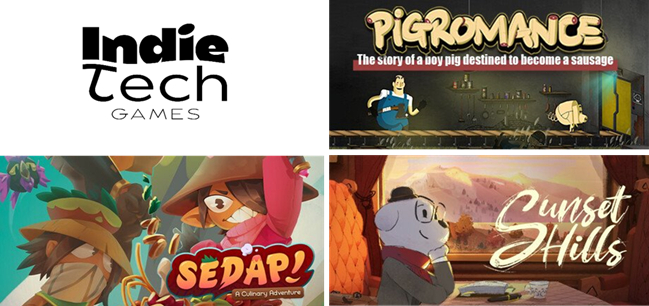Indie games are reshaping the gaming landscape, which is in constant flux, a dynamic interplay between behemoth AAA studios and the nimble creativity of indie developers. For years, AAA games dominated, boasting cutting-edge graphics and massive marketing budgets. But a shift is occurring, a quiet revolution fueled by innovative gameplay, unique narratives, and a direct connection between indie developers and their communities. So, who’s truly at the helm of gaming’s future: the industry giants or the indie underdogs?
The AAA Landscape: Strengths and Weaknesses
AAA games, developed by large studios with substantial resources, are often synonymous with high-fidelity graphics, expansive worlds, and complex gameplay systems. These are their strengths, drawing millions of players into immersive experiences.
- Graphical Fidelity: AAA studios can push the boundaries of visual realism, creating stunningly detailed worlds that immerse players like never before.
- Massive Marketing Budgets: AAA titles benefit from extensive marketing campaigns, reaching a wider audience and generating significant hype.
- Established Franchises: Built on established intellectual property, AAA games leverage existing fan bases and nostalgia to guarantee a certain level of success.
However, AAA development also faces its own set of challenges.
- Risk Aversion: The high cost of development often leads to a focus on proven formulas and sequels, stifling innovation and creativity.
- Microtransactions and Monetization: The pressure to recoup massive investments can lead to aggressive monetization strategies, including loot boxes and microtransactions, which can negatively impact player experience.
- Development Cycles: Lengthy development cycles can result in delays, feature creep, and ultimately, a product that doesn’t meet initial expectations.

The Indie Revolution: Agility and Innovation
Indie games, developed by smaller teams or individuals, often prioritize innovation, unique gameplay mechanics, and compelling narratives over graphical prowess. This allows them to take risks and explore new ideas that AAA studios might shy away from.
- Creative Freedom: Unburdened by shareholder expectations and market trends, indie developers can pursue unique artistic visions and experiment with new gameplay mechanics.
- Direct Community Engagement: Indie developers often foster close relationships with their communities, actively incorporating player feedback and building loyal followings.
- Lower Development Costs: Smaller teams and shorter development cycles allow indie games to be produced at a fraction of the cost of AAA titles, enabling them to explore niche genres and experimental gameplay.
Despite these advantages, indie developers also face challenges.
- Visibility and Marketing: Reaching a large audience can be challenging for indie games without the marketing muscle of AAA studios.
- Funding and Resources: Securing funding and finding skilled talent can be difficult for smaller teams, potentially limiting the scope and polish of their projects.
- Discoverability: With a flood of new indie games released every day, standing out from the crowd and getting noticed by players can be a major hurdle.
The Blurring Lines and the Future of Gaming
The lines between indie and AAA are increasingly blurring. AAA studios are beginning to recognize the value of indie innovation, often taking inspiration from successful indie titles or acquiring smaller studios outright. Meanwhile, some indie studios are achieving significant commercial success, demonstrating that creative games can also be financially viable.
The Rise of AA Games
A middle ground is emerging in the form of “AA” games, offering a balance between indie creativity and AAA production values. These studios often have more resources than typical indie developers, allowing for higher production quality while still retaining a focus on innovation and unique gameplay.
The Impact of Digital Distribution
Digital distribution platforms like Steam, Itch.io, and the Epic Games Store have democratized game development, making it easier for indie developers to reach a global audience and compete with AAA titles on a more level playing field.
The Power of Community
Gaming communities play a crucial role in the future of gaming, especially for indie developers. Online forums, social media, and streaming platforms allow players to connect with developers, share feedback, and build hype around promising indie titles.
Who Shapes the Future? A Collaborative Effort
Ultimately, the future of gaming is not an either/or proposition. Both AAA and indie games have vital roles to play. AAA studios can learn from the innovative spirit and community engagement of indie developers, while indie developers can benefit from the resources and production values of larger studios. The result is a more diverse and exciting gaming landscape for everyone.
Looking Ahead: Trends to Watch
- Cross-platform play and accessibility will continue to break down barriers and connect players.
- Cloud gaming will make high-quality gaming experiences accessible to a wider audience, regardless of hardware limitations.
- The metaverse and other immersive virtual worlds will create new opportunities for social interaction and gameplay.
- Subscription services will continue to evolve, offering players access to a wider library of games for a recurring fee.
The future of gaming is bright, driven by a symbiotic relationship between AAA powerhouses and indie ingenuity. As players, we are fortunate to witness this evolution and reap the rewards of a constantly evolving and ever-expanding world of interactive entertainment.








0 Comments